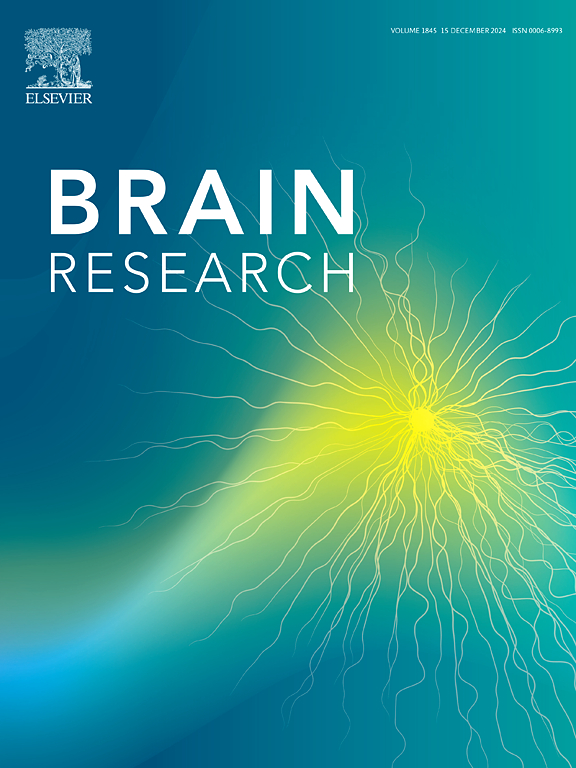敲除小鼠5-HT7受体可轻度改变中缝背神经元的结构和功能
IF 2.7
4区 医学
Q3 NEUROSCIENCES
引用次数: 0
摘要
5-羟色胺(5-HT) 7型受体(5-HT7R)在大脑中介导5-HT的多种生理活动。靶向破坏5- ht7r编码基因的小鼠表现为行为表型的改变。成人大脑发育的5-羟色胺能调节和5-羟色胺系统活性的改变与功能性5-HT7Rs的消融有关,这可能是文献中描述的行为表型的潜在基础。本研究旨在探讨5-HT7R缺失对中隔核中线区单个5-HT神经元结构和功能的影响。结果发现,在5- ht7r缺失的动物中,色氨酸羟酶免疫反应性DRN神经元的自发兴奋性突触后电流振幅升高,但这些细胞的兴奋性轻度降低。缺乏5-HT7Rs伴随着DRN 5-HT神经元形态的轻微改变。我们的研究结果支持了5-HT7R的消融导致小鼠DRN投射神经元功能改变的假设。5-HT7R编码基因敲除对脑5-HT系统的影响需要进一步的实验来充分阐明。本文章由计算机程序翻译,如有差异,请以英文原文为准。

Knockout of 5-HT7 receptor in the mouse mildly modifies the structure and function of dorsal raphe neurons
The serotonin (5-HT) type 7 receptor (5-HT7R) mediates numerous physiological actions of 5-HT in the brain. Mice with a targeted disruption of the 5-HT7R-coding gene are characterized by an altered behavioral phenotype. Modifications of the serotonergic modulation of brain development and of the activity of the 5-HT system in adulthood that are related to ablation of functional 5-HT7Rs might, potentially, underlie the behavioral phenotype described in the literature. The present study was aimed at finding the consequences of 5-HT7R deficiency for the structure and function of single 5-HT neurons of the midline region of the dorsal raphe nucleus (DRN). It was found that while the amplitude of spontaneous excitatory postsynaptic currents recorded from tryptophan hydroxylase-immunoreactive DRN neurons was elevated in 5-HT7R-deficient animals, the excitability of these cells was mildly reduced. A lack of 5-HT7Rs was accompanied by a minor modification of DRN 5-HT neuron morphology. Our findings support the hypothesis that ablation of the 5-HT7R results in an alteration of the function of mouse DRN projection neurons. Further experiments are needed to fully elucidate the effects of the knockout of the 5-HT7R coding gene on the brain 5-HT system.
求助全文
通过发布文献求助,成功后即可免费获取论文全文。
去求助
来源期刊

Brain Research
医学-神经科学
CiteScore
5.90
自引率
3.40%
发文量
268
审稿时长
47 days
期刊介绍:
An international multidisciplinary journal devoted to fundamental research in the brain sciences.
Brain Research publishes papers reporting interdisciplinary investigations of nervous system structure and function that are of general interest to the international community of neuroscientists. As is evident from the journals name, its scope is broad, ranging from cellular and molecular studies through systems neuroscience, cognition and disease. Invited reviews are also published; suggestions for and inquiries about potential reviews are welcomed.
With the appearance of the final issue of the 2011 subscription, Vol. 67/1-2 (24 June 2011), Brain Research Reviews has ceased publication as a distinct journal separate from Brain Research. Review articles accepted for Brain Research are now published in that journal.
 求助内容:
求助内容: 应助结果提醒方式:
应助结果提醒方式:


